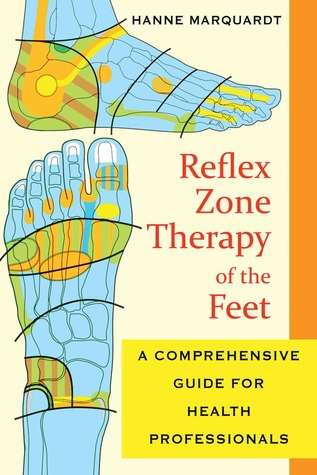Main Difference – Psychoanalytic vs Psychodynamic Therapy
Psychoanalytic therapy and Psychodynamic therapy are two of the most important treatment modalities recommended to address various psychiatric illnesses due to their broad range of advantages associated with clearly identified objectives and scopes. The main difference between psychoanalysis and psychodynamic therapy is their time limit and intensiveness; psychodynamic therapy is known to be briefer and less intensive than traditional psychoanalytic therapy.
This article looks at
1. What is Psychoanalytic Therapy? – Goals and Efficacy, Methods Used, Duration and Intensity
2. What is Psychodynamic Therapy? – Goals and Efficacy, Methods Used, Duration and Intensity
3. What is the difference between Psychoanalytic and Psychodynamic Therapy?
What is Psychoanalytic Therapy
Psychoanalytic therapy is a type of treatment, based mainly on the psychoanalytic theories introduced by Sigmund Freud, and focuses on how an individual’s unconscious mind influences his respective thoughts, emotions, and behavioral patterns.
The fundamental objective of psychoanalytic therapy involves the rational analysis of early childhood experiences which can give rise to potential behaviors, personality traits and various actions of an individual.
The duration of treatment will vary according to individual needs, but as a rule, there should be initial meets should occur least once a week; this may gradually decrease in frequency (once per month) but remain for a number of weeks, months or even years, depending on the patient response.
As far as the history of psychoanalytic therapy is concerned, Charcot, the person who worked together with Freud is known to have used hypnosis to treat women with hysteria who indicated symptoms such as partial paralysis, hallucinations, and nervousness.
Psychoanalytic therapists mostly use talking to patients, highlighting the concept of talk therapy, which is the commonest mode of intervention used here. Also known as talking-cure, this therapy tries to identify a relationship between a person’s childhood experiences, negative life events, unconscious feelings, thoughts and emotions which are thought to be playing an important role various human behaviors. Psychoanalytic therapy also involves free association, exploration of the transference, observing defenses and dream interpretation.
Although some professionals suggest that this method is time-consuming, expensive and lacks a definitive scientific basis, several research studies have proven its effectiveness in emotional growth as a result of the empathy, non-judgmental listening, understanding, and many other motivational factors.

What is Psychodynamic Therapy
Psychodynamic Therapy is defined as a systematic study of psychological forces which result in various human behaviors, feelings or emotions and how they can occur in relation to previous life experiences. In simpler terms, it mainly focuses on the dynamic relationship between concepts of conscious and unconscious motivation which relies on the fact that various processes of the mind have a definitive flow of psychological energy in the human brain.
The main types of this therapy include interpersonal therapy (IPT) and person-centered therapy which are associated with free association, resolving objectives on unconscious conflicts, enhancing defense mechanisms, positive transference, and symptomatic treatment.
Psychodynamic therapy involves taking repressed childhood experiences to conscious levels, using in analyzing an individual’s present issues.
Although there is some deficit of quantitative and experimental research, psychodynamic therapy is accepted throughout the world for treating phobias, anxiety disorders, depression, etc.

Difference Between Psychoanalytic and Psychodynamic Therapy
Definition
Psychoanalytic therapy is defined as a process by which a person is cured by bringing up unconscious thoughts to the conscious level which will ultimately result in the release of several repressed emotions and experiences.
On the other hand, Psychodynamic therapy, also known an insight-oriented therapy, is the oldest type of modern therapy used in the field of psychiatry and defined as an intervention that mainly focuses on unconscious processes which tend to decide an individual’s present behavior.
Duration and Intensity
Psychodynamic therapy is known to be briefer and less intensive than traditional psychoanalytic therapy, but both of them stem from the fundamental theory which accepts that the development of the individual is more or less affected by numerous unforgotten childhood experiences.
More importantly, the universal central concept of brief therapy is encouraged in psychodynamic therapy which mainly focuses on short-term, rapid interventions that directly target the patient’s issue, rather than associating him freely and discussing numerous, possibly unconnected problems, which usually play the hallmark in psychoanalytic interventions.
Conclusion
Both types of treatment can be used to address the same psychiatric condition; the effectiveness will tend to depend on the individual requirements, the severity of the illness, environment and possible past experiences.
Image Courtesy:
“Clinic Counselling Session” hellocoolworld (CC BY 2.0) via Flickr
“Balanced Life Institute – Santa Monica Psychotherapy” By Bliusa – Own work (CC BY-SA 4.0) via Commons Wikimedia

Key Difference – Psychoanalytic vs Psychodynamic
In psychology, psychoanalytic and psychodynamic are two words that can often be confusing as most people tend to use these interchangeably. But there is a key difference between psychoanalytic and psychodynamic. Psychoanalytic refers to the perspective and theoretical ideas that were originated by Sigmund Freud. Psychodynamic refers to the ideas and perspective that came from Sigmund Freud and his followers. As you can see psychoanalysis is the original creation of a psychological perspective which enables the psychologist to focus on the human mind. Psychodynamic theories drew inspiration from psychoanalysis.
What is Psychoanalytic?
Psychoanalysis refers to the theoretical basis that includes a specific approach, theories, and techniques that assist the psychologist to comprehend the human mind. These were founded by Sigmund Freud through his clinical work. In psychoanalysis, Freud spoke of many important concepts. Some of the key concepts that he emphasized on are the role of the unconscious, defense mechanisms, dreams, the id, ego and superego, etc. He specifically believed that the unconscious was important when understanding the human mind. He believed that all our fears and desires are restrained in the unconscious. This idea was also used in psychoanalytic therapy to treat patients who suffer from depression and anxiety disorders. Freud emphasized that by making the unconscious thoughts known, the patients can be treated.
Freud’s ideas of the human psyche are also interesting. He explains this through three components of id, ego, and superego. Id operates on the pleasure principle. Superego operates on the morality principle. Ego moderates id and superego and tries to create a balance so that he satisfies the demands of id in a socially acceptable manner. Other than these Freud came up with psychosexual stages of development as well. As you can see, the contribution of Freud to psychology is immense. His theoretic concepts not only created psychoanalysis but laid the foundation for psychodynamic perspective as well.

What is Psychodynamic?
Psychodynamic refers an approach or perspective of psychology that studies the human mind. The specialty is that psychodynamic approach emphasizes the role of the unconscious above all. It explains how human behavior, thoughts, and emotions are influenced by the unconscious. The foundation for psychodynamic perspective lies in the work of Sigmund Freud although later on this was developed by the works of his followers such as Carl Jung, Alfred Adler, Melanie Klein, John Bowlby and Mary Ainsworth.
Psychodynamic therapy also focuses on the inner conflict that the individual experiences, and attempts to relieve this tension that the individual feels as a cure for the illness. Here, the psychologist tries to bring the repressed emotions, behavior, etc. to the conscious so that the problem can be identified.

What is the difference between Psychoanalytic and Psychodynamic?
Definitions of Psychoanalytic and Psychodynamic:
Psychoanalytic: Psychoanalytic refers to the perspective and theoretical ideas that were originated by Sigmund Freud.
Psychodynamic: Psychodynamic refers to the ideas and perspective that came from Sigmund Freud and his followers.
Characteristics of Psychoanalytic and Psychodynamic:
Theories:
Psychoanalytic: Psychoanalysis is solely founded by Sigmund Freud.
Psychodynamic: Psychodynamic theories are founded by Freud and his followers.
Focus:
Psychoanalytic: Psychoanalysis focuses on the psyche, unconscious, dreams, etc.
Psychodynamic: Psychodynamic approach also focuses on the human mind and personality and tries to broaden the understanding.
Contribution:
Psychoanalytic: The main contributor or the founder was Sigmund Freud.
Psychodynamic: Sigmund Freud, Carl Jung, Alfred Adler, Melanie Klein, John Bowlby and Mary Ainsworth are some psychologists who have contributed to the development of Psychodynamic approach.
Image Courtesy:
1. “Sigmund Freud LIFE” by Max Halberstadt [Public Domain] via Commons
2. Alfred Adler (1870-1937) Austrian psychiatrist [Public domain], via Wikimedia Commons



